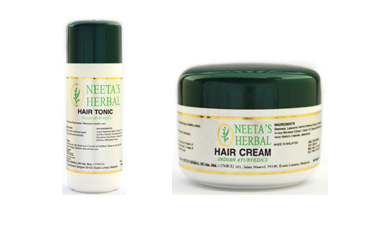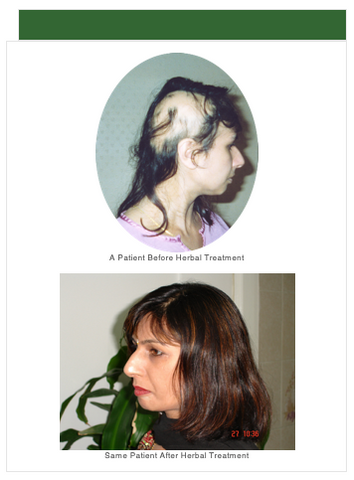
You might say that maintaining your hair is relatively easy but a careful look at what we do to our hair would shed some astonishing truths about our nature and personality. So many people suffer from hair and scalp disorders yet our physical appearance is the reflection of our inner thoughts.
Hair is made of protein, so keeping a healthy diet and good hygiene is an essential part of maintaining luscious locks. Caring for your hair would have to begin with putting an end to habits that cause hair loss, followed by easy yet effective steps to care for the hair.
So here are some tips on the don’ts and do’s of hair care and recommendations by Neeta for what you can do at home to get unbelievably beautiful hair.

1. Don’ts:
- Don’t wash hair with detergent based shampoos on a daily basis. Harsh shampoos can do more harm when used regularly and frequently leaving hair dry and leeched of natural oils thus damaging your hair.
- Don't brush your hair too much.Brushing your hair stimulates the follicles which promotes growth, but brushing too much too often, will cause damage to your hair strands that results in frizz and split ends.
- Don’t do perming, straightening, crimping, curling and bleaching or repeatedly colouring of hair unless absolutely necessary. Most damage is done to the hair and scalp when doing these treatments.
- Don’t’ do repeated styling. Styling by itself won’t overly damage your hairbut repeated styling multiple times per week put some serious strain on hair. Style your hair naturally to minimize styling damage.
- Don't use rubber bands to pull back or otherwise style hair. Rubber bands will encourage your hair to get snagged, ripping it out of the follicle.

2. Do’s:
- Wash hair sparingly and with a good quality shampoo. Frequent washing of hair is okay when only water is used. Water is natures “shampoo” and is most suited for all types of hair.
- Use shampoos with natural cleansers such as soapnut extract or shikakai (Acacia Cincona). Natural ingredients do not lather as well as a chemical sulfates but are most suited for regular use.
- Choose a shampoo that suits your hair type. Don't just go for any regular shampoo; go for the shampoo that works for you!
- Curly or coarse hair probably wants frizz-minimizing and softening shampoo.
- Straight or oily hair probably wants a gentle shampoo designed for daily washing.
- Colored or treated hair probably needs a shampoo that's fortified with natural extracts or amino acids, because treating your hair is essentially damaging it.
- Dry hair probably needs shampoos with glycerin and collagen to help restore some moisture into the hair.
- Use conditioner based on hair type, length, and treatment damage. A good rule of thumb is to condition every time you shampoo your hair, although very processed or dyed hair probably needs a little more love than natural hair.
- Deep condition twice a week and if possible try a homemade natural solution.
- For fine hair: If you have very limp hair, try a botanical oil treatment before you shampoo. Wash shampoo away and apply conditioner from the mid-shaft down to the end. Leave in for a minute before washing.
- For medium to thick hair, use a moisturizer with natural hydrators. Keep your conditioner light. Apply conditioner all over your head and let stay for 2-3 minutes.
- Be careful about using products with too much protein. Too much protein can leave your hair feeling desiccated and brittle. Use conditioners that come with balanced ingredient.

3. NEETA’S RECOMMENDATION
- Eat healthy and give your hair the right amount of vitamins. Hair is made of proteins, so make sure that you eat a balanced diet rich in lean protein, whole grains, fruits and vegetables. A healthy diet will ensure better-looking, better-feeling hair.
- Remove stress from your life. Stress can cause hair loss, so try not to let stress overcome you. This means finding healthy emotional outlets for your stress: yoga, biking, meditation, or other forms of exercise all work well.
- Let hair dry naturally. Dry with soft cotton towels. Avoid brushing hair while wet and only use a wide-tooth comb to brush out tangles while hair is wet.
- Try not to use a blow-drier. Heat transforms the protein bonding in healthy hair. Hair can sustain heat damage easily, especially from blow-driers. If you have to use a blow-drier, use the lowest-temperature setting and limit usage to once a week.
- If you shower before you sleep overnight, put your hair up in a bun and let it air-dry overnight. Your hair should be dry in the morning.
- Trim your hair regularly. The best way to get rid of split ends is to do it yourself! Take some hair shears and remove the split ends about 1/4 inch above the split ends. Many women with perfect hair never have split ends because they make it a priority to get their hair trimmed, or trim it themselves, every 6-8 weeks.
- Treat or dye your hair sparingly, if at all. Dyeing and treating your hair can take a lot out of it. The natural way is the best way to control hair damage and to keep hair brilliant and healthy.
- Finally, visit a hair specialist. A good way to help rejuvenate damaged hair and scalp is to get a consultation done with an experienced trichologist, anaturopathy or a trained herbalist such as in Ayurveda.

